Creating the world of Avatar: The Way of Water was no doubt a formidable task. In fact, it required two Production Designers to fulfill the herculean vision of Director James Cameron, who began working on the sequel 13 years ago before the first film even hit theaters.
Avatar featured never-before-seen characters created by transforming motion capture into performance capture, set against the brilliant colors and majesty of Pandora. The Way of Water finds Jake (Sam Worthington), Neytiri (Zoe Saldaña), and the whole Sully family in even more lush surroundings, branching out into oceanic landscapes. At their disposal are flying reptile-like creatures called ilu that can also swim underwater.
Everything in Pandora involving the Na’vi, the natural world, the oceans, and the creatures, was designed by Dylan Cole, who won an Art Directors Guild Award for his work on Avatar. Cole’s feature credits include TRON: Legacy, Alice in Wonderland, and Maleficent, while his TV credits include Game of Thrones, Boardwalk Empire, and John Adams. Overseeing Earth and all of the film’s vehicles and technology was Ben Procter, who served as the Concept Art Director on the original Avatar. His Art Director credits include Transformers: Age of Extinction, Transformers: Dark of the Moon, and Transformers: Revenge of the Fallen, as well as TRON: Legacy.
Below the Line recently spoke with Dylan Cole and Ben Procter via Zoom from their respective Los Angeles locations to discuss reuniting with James Cameron on the second of a planned five-film franchise. Essentially, they took Cameron’s fantastical ideas and designed them to reflect a recognizable reality that would make sense to their audience as well as make sense for the world of Pandora. At times, it was as if Cole and Procter were speaking in a foreign language, albeit passionately, to explain the inspirations behind their otherworldly and mind-bending creations. Please enjoy our conversation below:
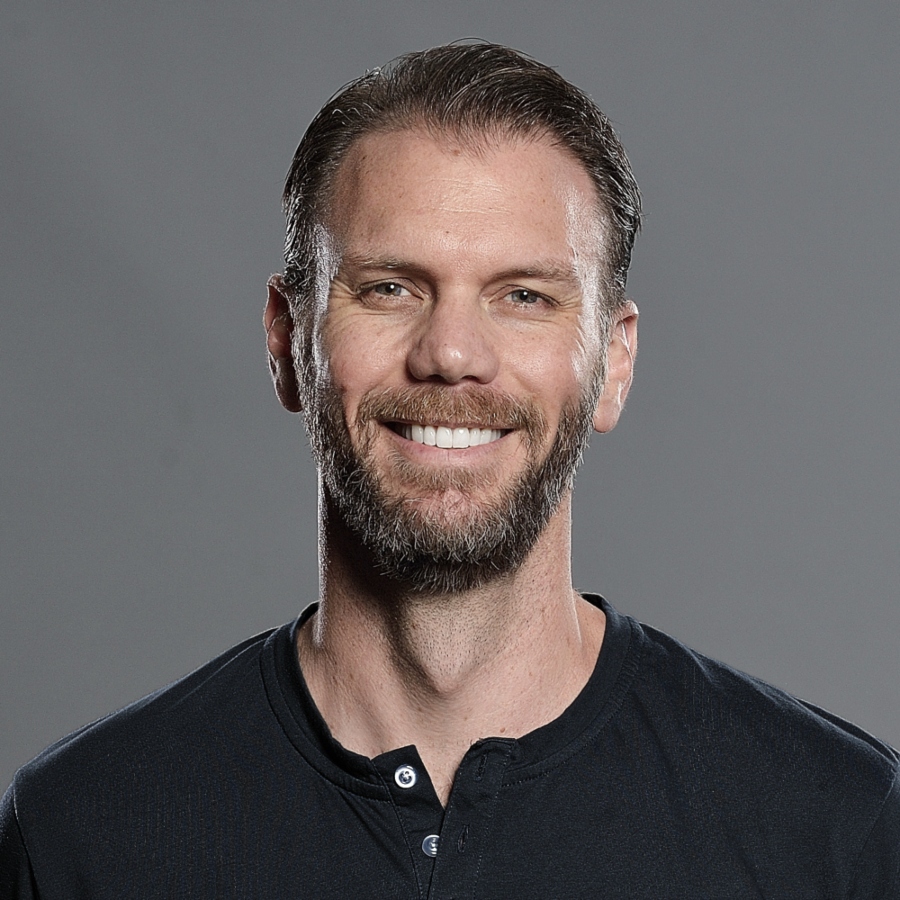
Below the Line: If there’d been a fly on the wall on the day you first met James Cameron, what would be the most surprising thing that fly would’ve heard?
Dylan Cole: That is a very good question. I think, if not a surprise, it was fun because he knew what the big challenges were going to be. So, in our very first meeting [with] me, he did a whiteboard sketch of the idea of, like, ‘Okay, but there are giant mangrove trees and there’s a village underneath them, kind of hanging. That’s going to be the hardest set,’ he says. And he was absolutely right. That certainly took some doing. So, from that very basic idea, there was a massive amount of questioning and stylistic things to figure out. Far and away the biggest challenge was getting to Metkayina Village and figuring out its culture.
Ben Procter: In terms of Day 1, the big thing that Jim talked to me about and did a sketch about is something that is in Avatar 5, so it’s something I can’t tell you [about]. What was interesting was that at the time, it was early days, right? We’ve been on the show for a long time. Everyone says it’s been 13 years. He’s been really actively thinking and working for maybe 10 years or something like that. Jim and his writers were working at Lightstorm [Entertainment, Cameron’s production company] right next to us, and we had our own little, small concept team. It was this great creative period where you could be working on stuff from anywhere across all of these new stories, right? It was just for fun to put Avatar‘s world inside an elastic balloon. We were just poking at it in different directions to kind of see how we could increase the scope and explore new parts of the planet and explore new technological ideas. It was a really fruitful time.
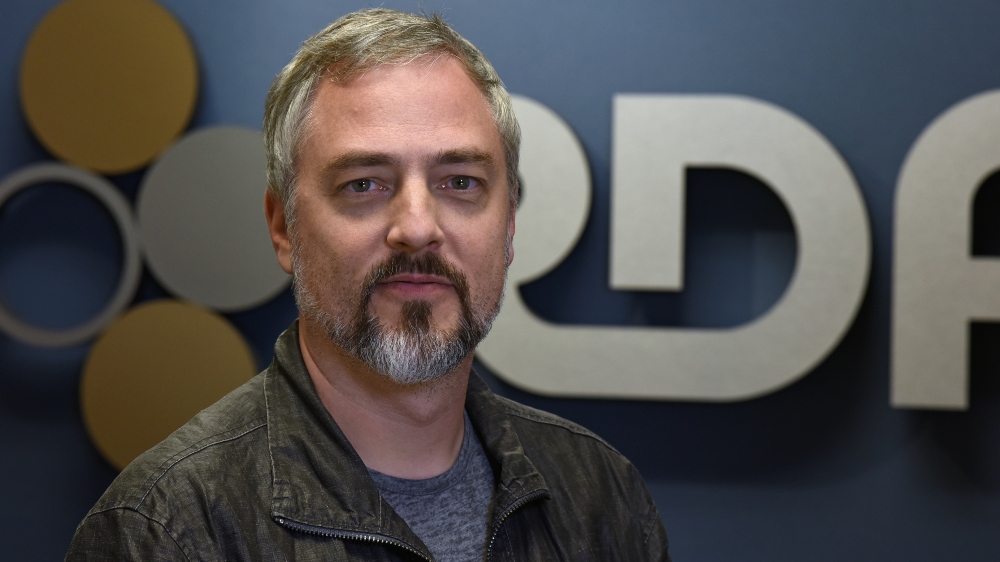
BTL: What would you say were the biggest challenges for each of you?
Procter: My biggest challenge on the film was the Sea Dragon, which is the enormous, 400-foot-long whale hunting vehicle that is in the film. In terms of what we had to do, it had to be so much more than a vehicle; it had to be a cool-looking vehicle. But most of the time, you’re dealing with it as a series of sets, spaces, and layouts that were manifested digitally and practically in all scales and in so many different ways. And the aesthetic and logistical issues alone were insane. This took a lot of people a long time to really get it done.
Cole: For me, it was the reef village of Metkayina. It started with Bora Bora on steroids, right, where, like, okay, this is what this giant reef and island are, and [then] it was sort of like walking on those overwater bure or bungalows to get to the resort. You want that, like, wishful fulfillment of island living, but how do we Na’vi-ize it? How do we make it feel even more connected? So, Jim had this idea of it being tensile and suspended, but we were basically looking at [it] almost like a kind of wasp nest, these sort of round woven structures suspended with these tensile membranes that served both as support for the whole village and as walkways. The biggest breakthrough came when we realized that it was all one system of walkways. It serves the theme of the story of connectivity, and [how all of Pandora is] one complicated system. That was a huge breakthrough.
BTL: What do you mean by connectivity?
Cole: In [the first] Avatar, it’s about the roots and the trees, and you know how they are able to travel amongst them, and so we wanted to keep that feeling with the village. When you look down at it, it actually looks kind of like neurons in a brain, which was one of our main references for [the first] film. We tried to continue that in the oceans with the sinuous, arching, fractal reef structures that you see throughout the film. There are a lot of very conscious design motifs as we’re exploring these things.
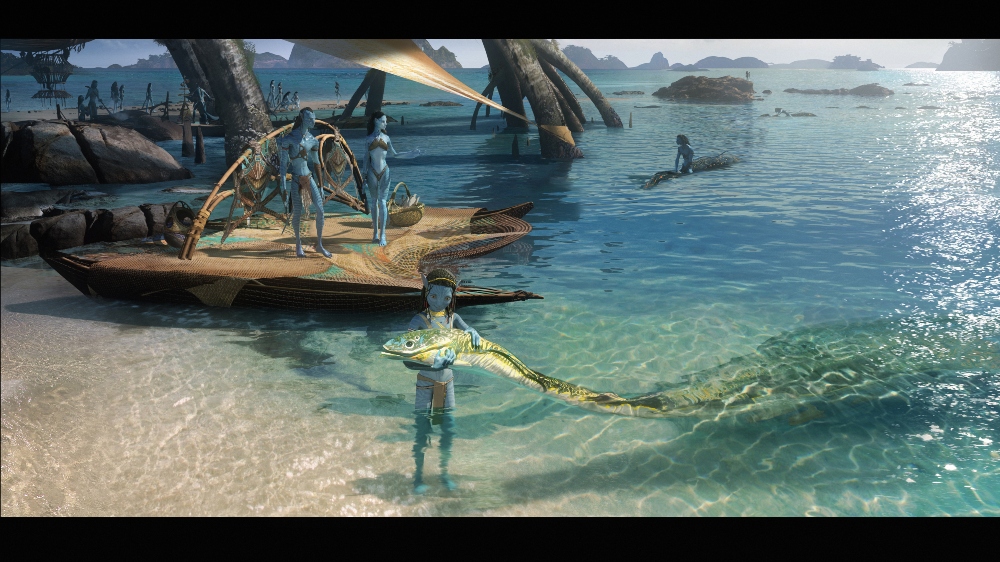
BTL: Ben, you were responsible for the ISV (Interstellar Vehicle) sling loads.
Procter: Yes. Very good… a common phrase that just rolls off the tongue [laughs]. Yeah, absolutely. Jim had this diabolical idea. I mean, the thing about Jim is that these movies are designed to celebrate nature and indigenous living and the balance that we’ve sort of lost in our industrialized culture, but at the same time, Jim is a frustrated engineer, as he would describe himself, and he loves technology. Look at how he decided to make these movies. He’s a tech guy, and no matter how evil ingenuity sort of turns out in these designs, he actually kind of almost enjoys that part.
So he devised the devilish idea of an ISV coming down to the planet to deliver things directly on a large scale so that you could quickly build a base and kind of just create a new foothold for the humans and just deny that the whole embarrassing Hells Gate thing ever happened in [the first] Avatar. The idea that it would simultaneously burn the rainforest in this display of almost god-like technological power, which is, of course, one of the film’s horror moments that get you back into the feeling that the RDA (Resources Development Administration) is coming for us, [which] is terrifying. That was his idea, fundamentally, but then we just had to design it. “How would you really go about this?”
I mean, everything that we do on Avatar, both on the tech side and on the organic side, follows the mantra of what it really is. Here’s a piece of technology that needs to come down to a planet and dispense vehicles to go out and start to bulldoze and create a new base. It’s like an erector set, a little kit of base-building. You’d have elevator systems inside stacked bulldozers and all the other geeky things we’d have to figure out. Some of that stuff never telegraphs directly to the audience, but we operate under the assumption that there’s a sort of subconscious perception that people have when they see extra details. Their brains can’t immediately understand but it feels thoughtful and it feels purposeful, and suddenly the world feels real.
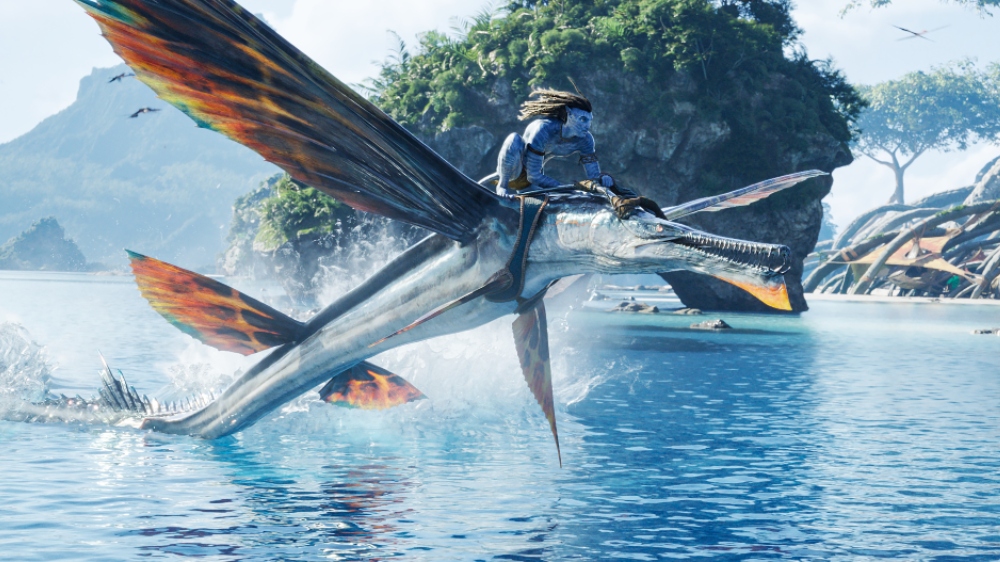
BTL: Let’s talk about the ocean scenes. Dylan, are you a scuba diver at all, or otherwise familiar with what oceanic life looks like up close?
Cole: I’m certainly not a scuba diver, nor do I know the ocean as well as Jim, but I grew up in Southern California loving the ocean. I love to travel to tropical places and snorkel and do some free diving, so I certainly had some firsthand experience. It’s funny and ironic that my name Dylan, in Welsh, actually means “son of the waves,” so I’ll take it! I can’t believe I hadn’t actually even thought that much about that before now. But, yeah, it was a monumental undertaking because who knows oceans better than James Cameron?
It was a daunting challenge to design anything new in the ocean for him, and it’s something that took a lot of us a long time. It was really just about looking at the Earth. It’s like, yes, we’re doing these fantastical new environments and creatures, but unless they’re grounded in reality, then it just becomes a fantasy movie. Sometimes, when you say these things out loud, they kind of sound silly, like, “Okay, our characters are riding giant flying fish.” Oh, okay. But at the same time, the skimwing happens to be my favorite new creature. You just kind of buy it.
BTL: With that realism in mind, how were the creatures developed to allow for evolution since the first Avatar?
Cole: We took the mechanics of a flying fish and gave it the super-aggressive crocodilian Ghariel head. The funny thing about that is that once we kind of went down that avenue, Jim, of course, brought the next day the skull he happened to have — a cast of the Ghariel. We’re like, ‘Oh, this is helpful. Thank you for the reference.’ And then we gave it a very aggressive paint job with the black and orange that stand out so well over the cyan.
You kind of take the DNA of it, and then you start putting in the little finer details. Its skin is similar to that of a marlin, and its tail has sail-fin characteristics. It takes a lot of effort for it to look like it just belongs. Originally, we had more of an Ikran-style head because we thought, ‘Oh, this might be like a missing link from, like, an ilu to them leaving the oceans and becoming like the Ikran of the banshees from the first film.’ Ultimately, we just wanted something different because the Ilu head was very similar to the Ikran. We just wanted something super aggressive.
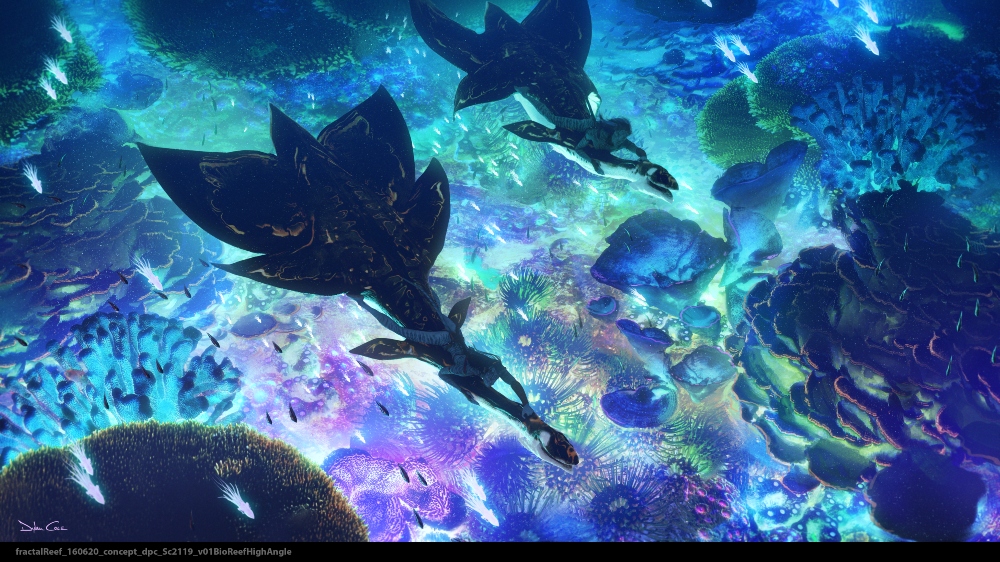
BTL: What were the inspirations for the fish and fauna in the ocean?
Cole: We had to think of the whole ecosystem. It’s not just, “Hey, design a few fish.” There are many different environments within the ocean, of course, from the sea floor up to — what is sand? What is a rock? Once we kind of came up with a language of coral, we were looking at a lot of fractal patterns and fractal designs. The Mandelbrot fractal was a major inspiration for the big arching sort of sinuous fractal shapes of coral or arches you see, such as when Lo’ak is hiding and trying to get away from the Akula, that big shark-like creature that attacks; that was all very much inspired by that.
We tried to think of it like when we were doing the forests. In [the first] Avatar, there are the very obvious exotic alien plants, but there are also a lot of things like ferns and stuff that are just kind of like touchstones so that you get what type of forest this is. We did the same in the ocean, so we had tons of big, crazy exotic coral, but we also had some more recognizable bits because you want it to feel how it feels to us to be in those types of environments — but it’s going to be unlike any version you’ve ever seen.
BTL: Talk about the fish that helps them to breathe underwater.
Cole: The gill mantle, which is what they use to breathe, is sort of like a jellyfish meeting a ray. It functions as a living underwater scuba. That was an idea of Jim’s. We had to kind of distill his foggy vision of it down to reality. Ultimately, it was a very beautiful thing, but how do you serve this story’s needs? Let it be a beauty moment as well, where he described that as sort of like angel wings around you, and then even how it kind of grabs you around the ribs to hold on. It was both an elegant storytelling solution and an elegant visual solution, I think.
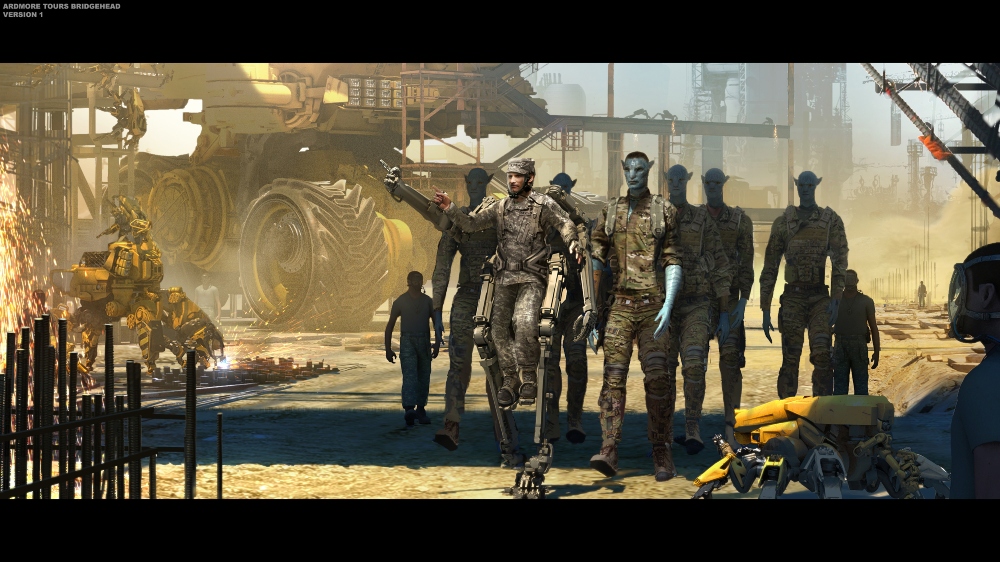
BTL: Moving to the scene where the RDA destroys a large swathe of forest and erects a giant-walled city on the ocean’s edge called Bridgehead. Ben, what inspired that design?
Procter: The city is founded by this violent event in which the ISV basically plants the seed, let’s say, of the city, right in the middle of a big circle, comes down, and burns it. So, the overall shape is a circle, which is inspired by how the jungle was burned. It’s also a pure statement of geometry, almost a technological statement of a kind of perfection that’s imposed visually on this beautiful organic coastline that was there before. I think just sticking with something as clean as that is so legible that we’re just going to do a circular base with a circular kill zone. There’s an uninhabited area nearby that is purely a kill zone, so only automated weaponry can simply obliterate any animal life that comes across [it]. They’re trying to pretend like Hell’s Gate never happened, but they’ve learned a lot of lessons from it, so they know what they’re up against. It’s not about the Na’vi anymore. That essentially defined the city plan.
Interestingly, early on, you’ve got this perfect circle. It’s very easy to start coming up with a design that embraces the perfection of that. We were trying to make it more organic. I sort of invented a river that runs through it, messing it up a little bit, but Jim felt that our early work looked a little too Utopian for him, and he pushed us toward real-world references of boomtowns, like this one in Canada called Fort McMurray. There’s a sort of ugly version of organic growth where, like in these boomtowns, stuff just gets built up so quickly and you can sense all these companies are competing for contracts, and it’s kind of like a wild mess. So, he had us redo the city plan to incorporate some of that spirit of a kind of wild boomtown. It’s like a cancerous growth of industrial fervor.
BTL: When the two of you watch the film in its entirety, are you able to geek out about what you’ve created?
Cole: Absolutely. I mean, we knew the story intimately. We knew every set; we knew every scene. We’d seen it all. I’d probably seen 80 to 90 percent of the final visual effects shots. I was impressed then, of course, but then seeing it projected on a big screen in 3D was a totally different experience and was very awe-inspiring. It’s like when you think you know something and you see it again for the first time, and we’re just as blown away [as] everyone else.
Procter: Absolutely. I mean, the phrase that just kept going through my head right as we sat there, kind of taking it in, and when it went to a black frame, finally, was like, “How did that happen?!” Even if you were a direct participant in the production, it’s so grand and seductive that it draws you in and makes you feel like you’re really watching things happen. It transcends the process of how it was made, even for those who made it. I’ll just give Jim and [Producer] Jon [Landau] props for doing everything they could to A) have the vision, and B) have the know-how and wherewithal in the business to simply create the conditions for a pseudo-miraculous thing like that movie. It’s not a normal film. It’s more of an experience to me, and I hope people recognize how special it is.
Avatar: The Way of Water is now playing in theaters across the globe courtesy of 20th Century Studios. Click here to read our interview with Editor Stephen Rivkin.





